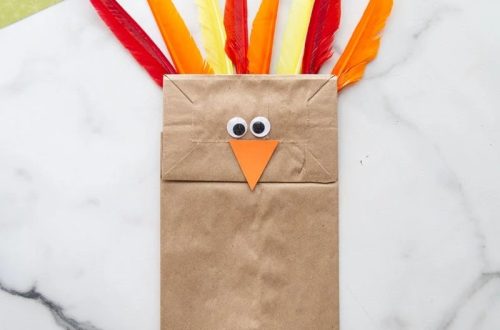Part 1: The Benefits of Interactive and Educational Toys for 1-Year-Old
1. Cognitive Development:
Interactive and educational toys for 1-year-old are specifically crafted to engage and stimulate their cognitive development during this critical stage of early childhood. These toys often incorporate various features such as bright lights, captivating sounds, and moving parts, aimed at capturing the child’s attention and fostering their curiosity. Through interaction with these toys, children develop important skills that form the basis of their cognitive abilities.
The multifaceted nature of these toys encourages 1-year-old to explore and learn in an engaging and interactive manner. As they manipulate the toys, they begin to form an understanding of cause-and-effect relationships, a fundamental aspect of cognitive development. Moreover, these toys provide opportunities for the development of problem-solving skills as children figure out how to interact with and maneuver the various components of the toys. This process of exploration and discovery contributes to the refinement of spatial awareness and the development of hand-eye coordination, which are essential for the child’s overall cognitive progression.
Additionally, these toys play a crucial role in stimulating the child’s sensory perceptions, encouraging them to actively engage with and understand their immediate environment. The integration of different textures, shapes, and interactive elements serves to further pique the child’s curiosity, consequently enhancing their sensory development and cognitive acumen.

2. Language Development:
Many interactive and educational toys for 1-year-old are designed to help them develop language skills. These toys often feature buttons or switches that produce sounds or phrases, encouraging the child to respond and engage in conversation. By interacting with these toys, children learn to associate words with actions, objects, and emotions, which is essential for their language development.
Part 2: Features to Look for in Interactive and Educational Toys for 1-Year-Olds
1. Safety:
When selecting interactive and educational toys for 1-year-olds, safety considerations should be paramount. It is crucial to prioritize the safety and well-being of the child when choosing toys that will be used for play and learning. This involves paying careful attention to the materials from which the toys are made and ensuring they adhere to stringent safety standards.
Opting for toys made from non-toxic materials is imperative to safeguard the child’s health. It ensures that they are not exposed to any harmful substances during play. Furthermore, it is essential to select toys with smooth edges. This prevents any risk of injury while the child is handling or playing with them. Children at this age often explore objects with their mouths. So it is important to ensure that the materials of the toys are not only non-toxic but also safe for mouthing.
Another critical consideration is to thoroughly inspect the toys for any small parts that could pose a choking hazard. These can include detachable components or small objects that may come loose during play. By carefully examining the design of the toys and verifying that they are free from small parts that could be ingested, parents can mitigate potential risks and create a safe play environment for their children.
Moreover, the durability of the toys is another vital factor to bear in mind. Ensuring that the toys are robust enough to withstand the rigors of rough play and exploration is essential. Selecting toys that are well-constructed and made from high-quality materials not only ensures their longevity but also minimizes the risk of breakage, which could lead to small parts becoming detached.

2. Engaging Sensory Features:
Interactive and educational toys for 1-year-olds should have engaging sensory features that stimulate their senses and encourage exploration. Look for toys that have bright colors, contrasting patterns, and different textures to capture the child’s attention. Toys with lights, sounds, and music can also provide sensory stimulation and keep the child engaged for longer periods.
Part 3: Types of Interactive and Educational Toys for 1-Year-Olds
1. Shape Sorters and Stackers:
Shape sorters and stackers are quintessential educational toys. They are renowned for their ability to foster a wide array of developmental skills in 1-year-old. These classic toys engage young children in hands-on activities. They not only captivate their interest but also promote vital aspects of their physical and cognitive growth.
One of the primary benefits of shape sorters and stackers is their capacity to facilitate the development of fine motor skills in 1-year-olds. These toys encourage the refinement of the child’s dexterity and coordination by grasping, holding, and manipulating the various shapes and pieces. Children gradually enhance their abilities to control and move their fingers and hands with precision. This is achieved through repetitive handling of these objects. This lays the groundwork for more intricate tasks in the future.
Moreover, shape sorters and stackers play a pivotal role in nurturing hand-eye coordination in young children. As they attempt to align the different shapes into their corresponding slots or stack pieces in a particular sequence, children hone their abilities to synchronize their visual perception with their physical movements. This harmonious coordination of their visual and motor skills is fundamental for a wide range of activities, from writing and drawing to engaging in sports and other physical endeavors.
Furthermore, these toys serve as invaluable tools for promoting problem-solving abilities in 1-year-olds. By presenting children with the challenge of determining which shape fits into which slot or how to balance and stack the pieces, these toys encourage cognitive engagement and critical thinking. The process of trial and error as children attempt different combinations of shapes and positions fosters their problem-solving skills. It instills perseverance and a sense of accomplishment as they succeed in completing the tasks.
2. Musical Instruments:
Musical instruments such as drums, shakers, and xylophones are great for encouraging 1-year-olds to explore and create different sounds. These toys help children develop an understanding of rhythm and tempo, as well as fine-tune their motor skills by manipulating the instruments. Additionally, music can have a positive impact on a child’s emotional development and can provide a means for self-expression.

Part 4: How Interactive and Educational Toys Benefit 1-Year-Olds
1. Encouraging Independent Play:
Interactive and educational toys for 1-year-olds serve as instrumental tools in promoting independent play. They offer children the freedom to explore and learn at their own pace. Through these toys, children are empowered to engage in unstructured play, enhancing their abilities to discover, problem-solve, and develop critical skills independently. This fosters a sense of autonomy and confidence.
These toys provide an environment that encourages children to take the lead in their play experiences. They foster a greater sense of independence. As children interact with the toys and explore their different features, they are given the opportunity to make their own choices and decisions. This cultivates a sense of agency and autonomy. This autonomy in play not only allows children to pursue their own interests and curiosities but also instills a sense of confidence in their own abilities and judgment.
Moreover, interactive and educational toys for 1-year-olds are designed to promote hands-on exploration and engagement. They provide children with opportunities to learn and problem-solve independently. As children manipulate and interact with these toys, they encounter challenges. These challenges prompt them to think critically and devise their own solutions. This process of independent problem-solving strengthens their cognitive abilities. It also fosters a sense of self-reliance and efficacy as they overcome obstacles and achieve their goals.
Furthermore, independent play with these toys can also promote a sense of self-discovery and personal achievement. As children engage with the toys on their own, their experiences and accomplishments become a source of pride and confidence, contributing to the development of a positive self-image and a resilient, can-do attitude.
2. Promoting Social Interaction:
While interactive and educational toys for 1-year-olds can provide opportunities for independent play, they also offer avenues for social interaction. Many of these toys are designed for group play, such as stacking blocks or toy sets that encourage cooperation and sharing. By engaging in play with others, 1-year-olds can develop important social skills such as communication, empathy, and cooperation.
In conclusion, interactive and educational toys for 1-year-olds play a vital role in their development, providing opportunities for cognitive, language, and social growth. When choosing these toys, it’s essential to consider the child’s safety, sensory engagement, and the specific benefits each toy offers. By incorporating these toys into a child’s playtime, parents and caregivers can help foster a love for learning and exploration in their little ones.




